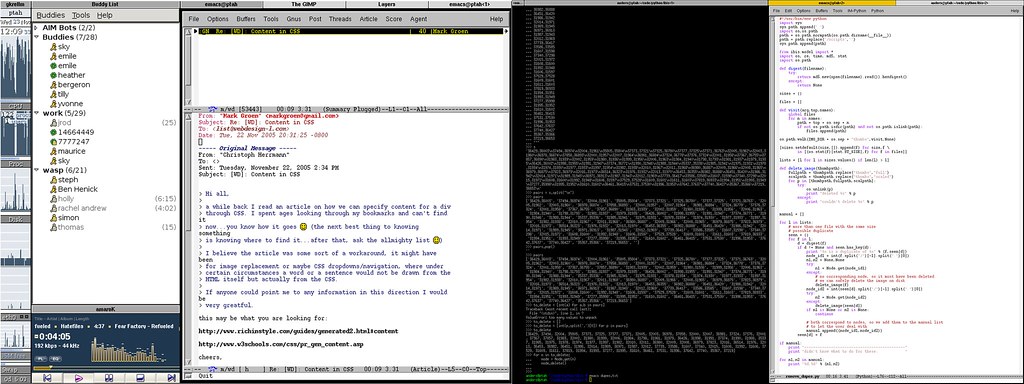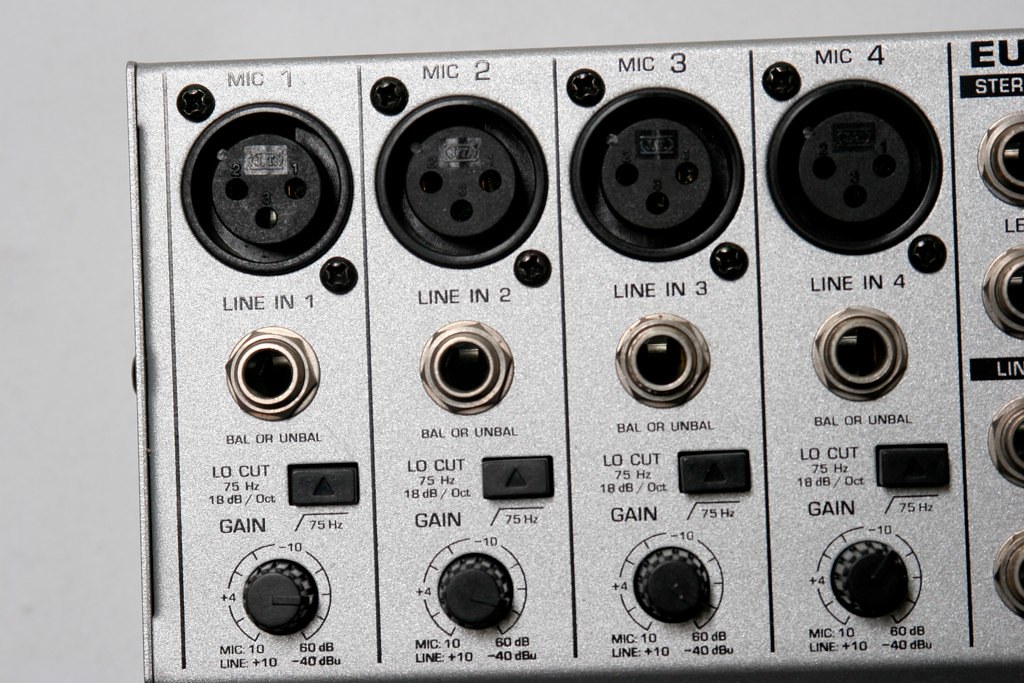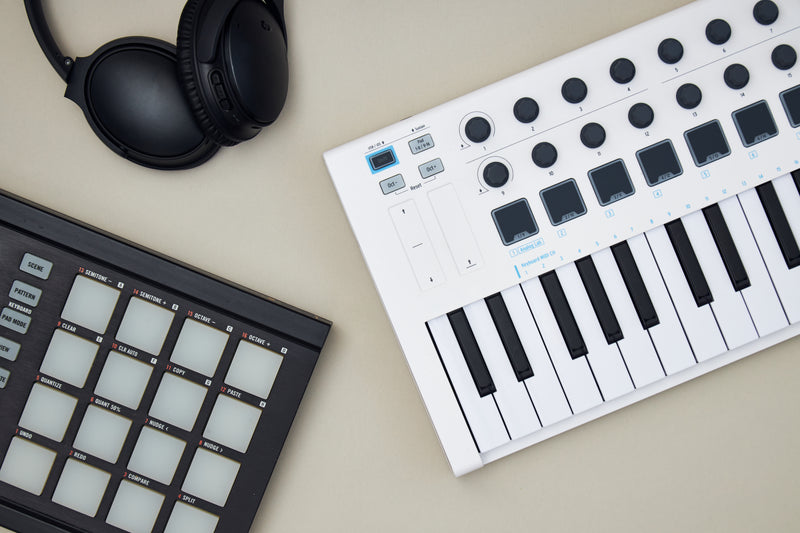Are you tired of using the same old music production software everyone else uses? Do you want to explore new and innovative ways to create music? Look no further than Linux tools and techniques. In this blog post, we’ll introduce you to a new world of music production that will revolutionize how you create and produce music. Linux for music production.
Whether you’re a seasoned producer or just starting out, these Linux tools and techniques will unleash your ultimate creativity. So, let’s dive in and explore what Linux has to offer for music production.
Table of Contents

Why Linux is a game-changer for music production
Linux has been revolutionizing the world of music production with its vast range of powerful tools and software. Linux is known for being incredibly stable, customizable, and secure. Moreover, the absence of licensing fees makes it an ideal OS for musicians on a budget. It’s also lightweight, meaning that you can run it effectively even on older hardware without any issues. Linux provides a solid foundation for building music production workflows ranging from basic to complex ones for professional-grade audio editing and manipulation.
Furthermore, most Linux distributions come pre-installed with many essential multimedia codecs such as MP3s out-of-the-box thereby reducing installation time significantly. By leveraging the power of open-source technology in music-making, you will have access to unlimited possibilities at your fingertips, which are otherwise difficult to achieve using proprietary solutions on other operating systems like macOS or Windows.

Setting up your Linux system for music-making
Before diving into Linux music production, setting up your system properly is important. Installing a low-latency kernel is crucial for minimizing audio latency and ensuring smooth playback. You can also optimize your system’s performance by disabling unnecessary services and installing lightweight desktop environments.
Additionally, having the right hardware for music production on Linux is important. Choosing a compatible audio interface is essential for achieving high-quality sound recording and playback. It’s also recommended to have a dedicated graphics card to handle the demands of running audio software.
Once you have your system set up, you can confidently start exploring the world of Linux music production.

Essential Linux tools and software for audio production
Linux audio production is incomplete without the right set of tools and software. Fortunately, Linux has a plethora of open-source options that can rival their proprietary counterparts. Ardour is a popular digital audio workstation (DAW) that offers advanced recording, editing, and mixing capabilities.
Audacity is another versatile audio editor that supports multiple tracks and effects. For virtual instruments and samplers, ZynAddSubFX and Hydrogen are popular choices. To create unique sounds, LV2 plugins provide an extensive range of effects and processors. For mastering, JAMin offers professional-grade tools for EQ, compression, and limiting. With these essential tools in your arsenal, you can produce high-quality music on Linux without breaking the bank.

Optimizing your workflow with the power of JACK Audio Connection Kit
Understanding the Basics of JACK Audio Connection Kit
JACK Audio Connection Kit is a powerful tool for Linux music production that allows you to connect audio and MIDI devices in real-time. It acts as a virtual patch bay, enabling you to route audio signals between different applications and hardware devices. Understanding the basics of JACK is essential for optimizing your workflow and getting the most out of your Linux-based studio. With JACK, you can create complex audio setups, record multiple tracks simultaneously, and process audio in real-time using plugins. It may take some time to get used to, but once you master JACK, you’ll wonder how you ever worked without it.
Setting Up Your Music Production Environment with JACK
To optimize your music production workflow on Linux, JACK Audio Connection Kit is an essential tool to have. Before using JACK, it’s important to set up your music production environment properly. This involves configuring your audio interface and setting the sample rate and buffer size in your DAW to match those of JACK. Once set up, you can use JACK to route audio between different applications and devices, allowing for greater flexibility and control over your sound. With the ability to create complex audio routing setups, JACK is a powerful tool for any Linux-based music producer looking to take their creativity to the next level.
Streamlining Your Workflow with JACK Patchbay
JACK Patchbay is an essential tool for Linux audio production, allowing you to streamline your workflow and connect multiple audio applications with ease. With JACK, you can route audio signals between different software programs and devices and process them in real time without any noticeable latency. The intuitive drag-and-drop interface of JACK Patchbay makes it easy to create complex routing setups without needing to use the command line. Whether you’re recording live instruments or creating electronic music, JACK Patchbay can help you achieve ultimate creativity by enabling seamless integration between all of your favorite Linux audio tools.
Enhancing Your Music Production with JACK Rack Effects
JACK Rack Effects is a powerful tool that allows you to enhance your music production by adding various audio effects such as reverb, delay, and distortion. You can connect it with other tools like Ardour or Audacity for more flexibility in your workflow. With its lightweight and streamlined interface, JACK Rack Effects can be easily added to your Linux system for efficient audio processing. Additionally, the vast library of available plugins in the JACK community ensures versatility when working on different types of projects. Overall, JACK Rack Effects is an excellent addition to any Linux-based music studio looking to elevate their sound design capabilities.
The best open-source digital audio workstations (DAWs) on Linux
Open-source digital audio workstations (DAWs) are essential tools for music production, and Linux offers several powerful options that rival commercial software. Ardour is a top choice for many Linux-based studios with its intuitive interface and professional features such as unlimited tracks, non-destructive editing, and support for video synchronization.
It also has built-in plugins like EQs, compressors, and reverb to enhance your mix. Another popular DAW is Qtractor, which supports MIDI recording/editing and comes with various effects/plugins to incorporate into your projects. For those looking for a more minimalist option,
LMMS provides an easy-to-use interface while still offering advanced functionality such as audio playback/recording.
Whether you’re a beginner or an experienced producer, these open-source DAWs on Linux can provide the resources needed to create high-quality music without breaking the bank.

Creative sound design with LV2 plugins
Exploring the World of LV2 Plugins for Sound Design
LV2 plugins offer endless possibilities for sound design in Linux-based music production. From synthesizers and effects, to samplers and granulators, there’s no shortage of options when it comes to manipulating sound with these powerful tools. With their open-source nature, developers are constantly creating new and innovative plugins that can be easily integrated into your workflow.
The LV2 format also allows for easy parameter automation within your digital audio workstation (DAW), giving you complete control over your soundscape. Don’t be afraid to experiment with different LV2 plugins – they may just unlock a whole new level of creativity in your music production journey!
How to Use LV2 Plugins for Creative Sound Design in Linux
LV2 plugins are open-source software modules that can be used for sound design and audio processing in Linux systems. They come in different types, from equalizers to delays, reverbs, modulators, and synthesizers. To use LV2 plugins in your music production projects on Linux, you need a compatible host application such as Ardour or Qtractor.
To get started with LV2 plugins for creative sound design in Linux:
- Install the LV2 plugin package of your choice using the package manager or source code.
- Launch the host application and load the desired plugin onto an audio track or bus.
- Adjust the plugin parameters to create unique sounds and effects.
- Combine multiple plugins to achieve complex processing chains and automation.
With thousands
Tips and Tricks for Maximizing Your Creativity with LV2 Plugins
To maximize your creativity while sound designing on Linux, try experimenting with LV2 plugins. These open-source plugins offer a level of customization and control that is unmatched by their proprietary counterparts. One great feature of LV2 plugins is the ability to combine effects in unique ways to create completely new sounds. Many LV2 plugins are highly customizable, allowing you to fine-tune parameters and even create custom presets. Don’t be afraid to dive deep into LV2 plugin settings and explore what they offer for truly innovative sound design in your music production projects!
Enhancing Your Music Production with LV2 Plugins: A Comprehensive Guide
LV2 plugins are a powerful tool for enhancing your music production on Linux. These plugins offer a wide range of effects, from EQs and compressors to reverbs and delays. One of the key benefits of LV2 plugins is their flexibility – they can be used in any LV2-compatible DAW, giving you the freedom to experiment with different sounds and effects.
Some popular LV2 plugins include Calf Studio Gear, LSP Plugins, and Invada Plugins. With these tools at your disposal, you can take your music production to the next level and create unique sounds that stand out from the crowd.
How to connect MIDI devices in Linux
Connecting MIDI devices in Linux is often a straightforward process. Most Linux distributions will recognize your device automatically and create an ALSA (Advanced Linux Sound Architecture) interface for it. However, sometimes you may need to configure the settings manually.
One of the most popular tools for working with MIDI in Linux is QJackCtl, which allows you to connect different software and hardware components using JACK Audio Connection Kit. To use QJackCtl, simply launch it and make sure that both your MIDI device and DAW are running before connecting them together through its intuitive graphical interface.
Another useful tool for configuring MIDI devices on Linux is aconnectgui. This program provides an easy-to-use interface that allows you to establish connections between your various input and output ports quickly.
With these tools at your disposal, you can unleash the full potential of your MIDI controller or other hardware gear while producing music on a rock-solid operating system like Linux.

Recording live instruments in a Linux-based studio
Recording live instruments in a Linux-based studio requires a bit of setup, but it’s worth the effort. First, ensure your audio interface is properly configured and compatible with Linux. Ardour is a great DAW for recording live instruments on Linux, as it supports multiple inputs and has a clean interface.
Once your instrument is plugged in, and your levels set, hit record and start playing! Don’t worry about mistakes; you can always edit later. Ardour makes it easy to edit your recordings with its powerful editing tools, including time-stretching and pitch-shifting. When you’re happy with your takes, use Ardour’s mixing tools to balance the levels and add effects like reverb or compression. With the power of Linux and Ardour, you can create professional-quality recordings from the comfort of your own home studio.

Mastering and mixing techniques using Ardour’s powerful features
Recording live instruments in a Linux-based studio is an exciting task that can produce high-quality results. Ardour is one of the most powerful digital audio workstations for recording, editing, and mixing live performances on Linux systems. Its advanced features include multitrack recording with unlimited tracks, non-destructive editing capabilities, and support for various plug-ins compatible with the LV2 standard.
When recording live instruments on Ardour, setting up your system correctly before starting the process is essential. Low-latency kernels like PREEMPT_RT will reduce latency issues when monitoring input signals during playback.
Another important step is choosing the right microphone position and placement techniques for each instrument type to achieve optimal sound quality. Furthermore, depending on your music style preference, you can experiment with different miking techniques, such as close-miking or room-micing methods.
With Ardour’s intuitive user interface and comprehensive toolkit, mastering and mixing tasks are more feasible than ever before – enabling you to add numerous effects like reverb or EQs until producing crisp sounds that match industry standards.
The benefits of collaborating with other musicians through online communities
Collaborating with other musicians through online communities is one of the benefits of using Linux for music production. There are several online communities where you can connect with other musicians, share your work, and get feedback on your projects. One such community is the Linux Audio Users (LAU) forum, a great place to ask questions, share your music, and collaborate with other Linux users. Another community is the KXStudio community, which provides various tools and resources for Linux-based music production.
Collaborating with other musicians can help you improve your skills, learn new techniques, and get inspired by different styles of music. You can also collaborate remotely on projects using tools like Ardour’s built-in collaboration features or online collaboration platforms like Jamulus or Ninjam. Collaborating with other musicians can take your music production skills to the next level and create something unique and innovative.
In conclusion, Linux provides unprecedented customization and flexibility for music production. With the right tools and techniques, you can take your creativity to new heights and achieve professional-level results without breaking the bank. We hope this guide has inspired you to explore what Linux has to offer regarding audio production. Check out our other content if you want more information on Linux for music production or other related subjects. Thank you for reading!
FAQ
Who can use Linux for music production?
Anyone who wants a free and stable OS can use Linux for music production.
What software is available for music production on Linux?
Popular software for music production on Linux includes Ardour, LMMS, and Rosegarden.
How does Linux compare to other OS for music production?
Linux is stable, efficient, and free, making it an attractive option for music production.
What about compatibility with hardware and plugins?
Linux has improved compatibility with hardware and plugins, but some may not be fully supported.
How do I get started with Linux for music production?
Download a Linux distribution like Ubuntu Studio, install music software, and experiment with it.
But I’m used to using another OS. Why should I switch to Linux?
Linux offers a cost-effective and reliable alternative to proprietary OS for music production.


